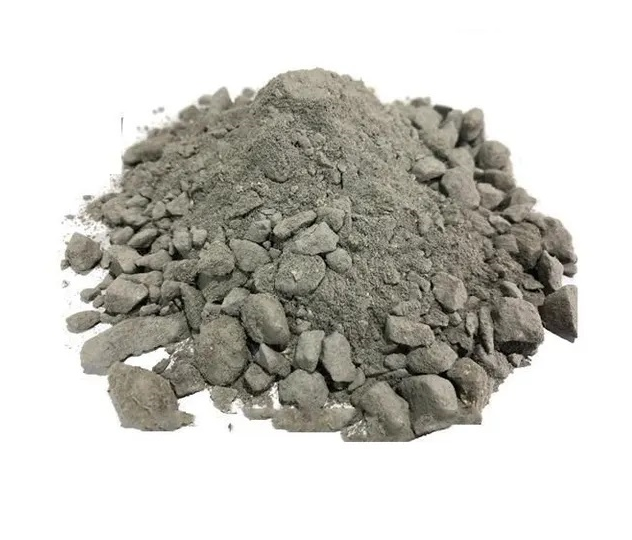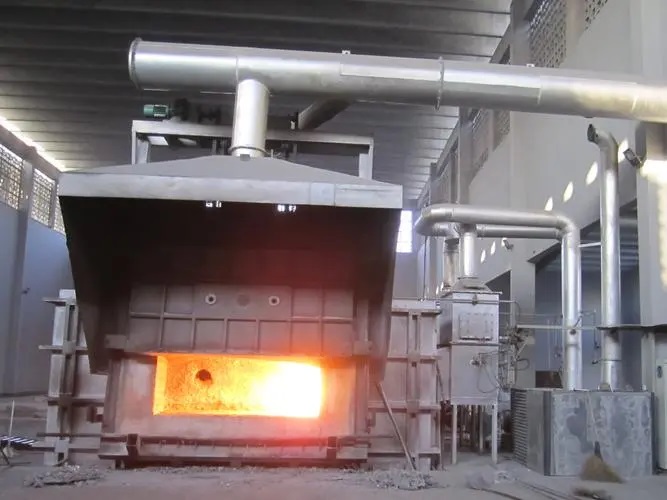Why Is The Non-stick Aluminum Castable Necessary for Aluminum Melting Furnace?
Why Is The Non-stick Aluminum Castable Necessary for Aluminum Melting Furnace?
Thermal furnaces used in aluminum smelting are collectively referred to as aluminum melting furnaces. The melting point of aluminum is 660°C, which is relatively low among many metals. However, aluminum is highly active and has a very strong penetration ability. It is easy to corrode the refractory castable lining and change its performance, resulting in cracks and peeling.
Appropriate refractory castables can significantly improve the service life of the aluminum alloy melting furnace, will not produce aluminum ash and corundum nodules during the aluminum smelting process, and prevent the metal aluminum solution from reacting with elements in the refractory material, thereby preventing impurities from entering the aluminum Alloy affects the quality of aluminum alloy. Reduce the adhesion rate of molten aluminum and improve the anti-seepage ability.

Therefore, refractory castables are very necessary for aluminum melting furnaces, and their material selection is also very important.
There are three main reasons for damage to the lining of aluminum melting furnaces:
(1) Although the temperature of the molten aluminum in the furnace is not high, it has great penetrating power. The highly active molten aluminum slowly penetrates into the furnace lining through the pores and fine lines of the furnace lining, and has physical and chemical reactions with the furnace lining. The furnace lining is slowly loosened and peeled off, causing cracks in the furnace lining to increase and fall off.
(2) The molten aluminum in the furnace reacts chemically with the furnace lining to form adhesion, and the adhesion increases over time to form nodules, causing damage to the furnace lining.
(3) During the process of raw material addition or slag removal, bauxite or aluminum slag will cause a certain degree of impact and wear on the furnace lining, resulting in physical loss of the furnace lining.
However, the application of non-stick aluminum refractory castables can alleviate these situations to a certain extent.
Its working principle
The non-stick aluminum castable is to reduce the porosity and pore diameter of the castable by adding ultra-fine powder technology into the castable, so that the porosity of the non-stick aluminum castable can be reduced to below 10%, preventing the adhesion and penetration of aluminum liquid. Used in aluminum melting furnaces, it does not stick to aluminum, does not hang slag, and does not produce aluminum ash. It not only reduces the reaction between the aluminum liquid and the non-stick aluminum castable but also improves the quality of the aluminum alloy.
Features of non-stick aluminum refractory castable
The non-stick aluminum refractory castable is made of special-grade high-alumina bauxite, brown steel corundum, kyanite, alumina micro powder, calcium aluminate cement, silica micro powder, and special additives in strict proportions. It is a low-cement refractory castable specially developed according to the requirements of the aluminum melting furnace.
It has the performance characteristics of low impurity content, high density, high strength, high corrosion resistance, high penetration resistance, and no infiltration by molten aluminum.
The characteristic of this non-stick castable is that the strength increases with the increase in temperature; in addition, the volume of the castable is very stable at various temperatures.
Application of non-stick aluminum refractory castable
Non-stick aluminum castables are suitable for aluminum melting furnaces, reverberatory furnaces, double stone furnaces, aluminum ladles, and other parts, and are widely used in the aluminum smelting industry.
As a custom-developed lining material for aluminum melting furnaces, it can effectively prolong the service life of aluminum melting furnaces for more than 10 months.


